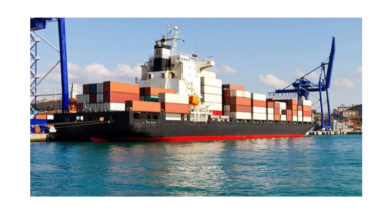The Changing Face Of Label
Shorter runs, more frequent job changes, the handling of more complex structures, compliance with more stringent legal requirements and automation are key trends in today’s label market.
New markets are also opening up as avenues for growth. For label printers, narrow web flexible packaging printing is an increasingly viable option, with modern presses able to handle multiple substrates, from paper and liner-backed materials to unsupported structures. For commercial printers, sheet-fed labels and folding cartons are new avenues to explore.
 Growth can also be achieved through takeovers, acquisitions and mergers. There have been some notable examples of this recently, such as the acquisition of Spear by Constantia Flexibles, CCL Industries’ purchase of leading Swiss converter Bandfix, the creation of Coveris and now the acquisition of the powerful Telrol Group (which itself had just acquired Kolibri in Holland) by South Korean group Hansol Paper.
Growth can also be achieved through takeovers, acquisitions and mergers. There have been some notable examples of this recently, such as the acquisition of Spear by Constantia Flexibles, CCL Industries’ purchase of leading Swiss converter Bandfix, the creation of Coveris and now the acquisition of the powerful Telrol Group (which itself had just acquired Kolibri in Holland) by South Korean group Hansol Paper.
The supplier side of the business is also seeing continued consolidation, with, for example, Heidelberg taking full control of Gallus through an exchange of shareholding and EFI augmenting its software portfolio with multiple acquisitions covering shipping to management information.
Sustainable technology
Technology developments are increasingly helping label converters meet sustainability criteria set by packaging buyers through environmental scorecards, recyclability requirements or carbon emission reduction policies.
Notable developments include solventless systems – in- and off-line lamination, adhesives, inks and silicone formulations – and LED-curable lamp systems, which allow a reduction in energy input and waste heat output, though at a greater cost than existing mercury systems.
Health and safety, and legislative requirements are also increasingly important, as can be seen by the debate around low-migration UV inks. The Swiss and now the German governments have implemented guidelines for PPM migration of UV ink components, following on from Nestle’s guidelines, which have become in many cases a de facto industry standard for indirect food contact labels on semi-porous packaging substrates.
Presses and finishing
Narrow web presses are becoming more fully automated, particularly on the flexo side. We now see the ability of top-of-the-range flexo systems to control both register and pressure, and to recall these settings for repeat jobs, greatly increasing efficiency and lowering the crossover point with digital presses. A move to 6- or 7-color process printing can also be discerned, meaning there is no need to wash presses or change anilox or inks between jobs, with Pantone simulation handed at the pre-press stage.
This has been matched by developments in the efficiency of in-line converting operations: just two examples are fast change die-cut units and slide-mounted waste matrix stripping rolls which allow stripping operations to keep pace with press speeds without matrix breaks, even on complex shapes.
Workflow and MIS system suppliers are integral to the digitisation of the label industry, as their software permits the transfer of job data around a print plant seamlessly, quickly and in a format accessible to all stakeholders, from the pressroom manager to the press operator and finally the print buyer, who can now approve a high resolution file remotely via secure browers. No more passing jobs on the press.
Digital
Workflow and MIS systems are even more important when you begin discussions about digital printing, as the flow of job data is critical to ensuring digital presses are utilised and operating at maximum efficiency, including ordering, selection of the most suitable press and ganging multiple jobs on the web.
Digital has been a growing presence in the label industry, today accounting for around 12%+ of all new press sales.
Key benefits of digital are: on-demand, just-in-time print capabilities; the ability to produce multiple variations on the same sheet or web path, so matching the growing market for personalisation; facilitating the growth in SKU variants within a product line; speeding the cycle from design to shelf; and removing the need to hold large stocks of labels.
 Converters are faced with an almost dizzying array of digital press manufacturers and technology, and depending on your requirement, there is a technology to suit. Are you looking for a full-scale production press? Perhaps a benchtop system is more applicable for your business needs? Are you interested in high-speed inkjet to replace industrial screen printing applications? Or will you select liquid or dry toner technologies for high end consumer product labels? In the wings are yet new technologies, including the forthcoming Landa Nanographic presses and, still in its R&D phase, photonics.
Converters are faced with an almost dizzying array of digital press manufacturers and technology, and depending on your requirement, there is a technology to suit. Are you looking for a full-scale production press? Perhaps a benchtop system is more applicable for your business needs? Are you interested in high-speed inkjet to replace industrial screen printing applications? Or will you select liquid or dry toner technologies for high end consumer product labels? In the wings are yet new technologies, including the forthcoming Landa Nanographic presses and, still in its R&D phase, photonics.
Digital isn’t necessarily the best option for all label printers, particularly as conventional presses evolve. An example is the work by a team of eight industry partners including Nuova Gidue, UPM Raflatac, Adare, Apex Group of Companies, AVT, DuPont, Esko and Flint Group through the REVO Digital Flexo project, whereby they have worked to ‘digitise’ key elements of the flexo process. The Adare print group pioneered this technology in practice and an early adopter is a Jordanian printer.
Digital units are also being installed on numerous conventional presses, with such modules providing the benefits of digital printing in an established press set-up, or even integrated into finishing lines to permit downstream valued-added enhancements to conventionally-printed labels. These can either be mono (black) inkjet heads across the width of the press, or full 4-color units such as those sold by Industrial Inkjet and Colordyne.
Partners
Labels and packaging play a much more important role today in how brands and consumers interact and engage with one another than ever before, with modern print products required to ‘perform’ and help secure a strong emotional attachment that keeps customers loyal to a brand and its products. Label printers have the knowledge, skills and capacity to help facilitate this.
In addition, label converters are at the heart of the growing use of ‘smart’ technologies which allow consumers to interact with product packaging through their smartphones or tablets. These technologies can be used as promotional devices, but also to provide additional ‘background’ information about a product, or how it can be used, and to help secure supply chains against counterfeiters.
These new technology developments keep the label industry growing, globally, at least 2-3 points above GDP growth. Although growth has slowed in the developed markets, there remains massive potential in the fast developing global markets including MENA, as can be seen by the slew of recent press installations across the region. Think about the fact that in developed markets, per capita consumption of pressure-sensitive label products is up to 16 sq m, where it is below one percent in a market like India. As trends which shaped the growth of the European and US markets kick in across the world’s developing markets, the pressure-sensitive label market is expected to see growth towards these consumption figures in the next two decades.
One of the best ways of keeping abreast of these many developments is through tradeshows, which allow you to meet suppliers face-to-face and discuss your specific scenario and requirements, and to catch up with your peers.
While the four-yearly drupa 2016 is still more than 18 months away, the region’s very own show dedicated to the print market, Gulf Print & Pack 2015, is fast approaching. Taking place April 13-16 next spring at the Dubai International Convention and Exhibition Centre, Dubai, Gulf Print & Pack 2015 will present products and technological developments for the Middle East’s various print markets – labels, packaging, commercial and industrial.
This can and will provide you with the information and tools to plot your company’s next phase of growth.






10 Comments